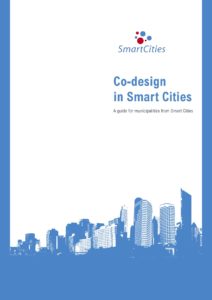
Co-design is a key part of developing effective e-services and e-government for Smart Cities. Co-design is the process of incorporating stakeholders into the service design process.
At the heart of the co-design approach is a move towards user-led process design, possibly also leading to a user-led approach to the delivery of services. This type of co-design is part of a broader shift towards citizens and staff working together to co-produce services in cities and municipalities.
The co-design process can start modestly – for instance an ICT department may work to change its relationship with front line service delivery staff – through to citizen-led service re/design.
This report brings together the different experiences and perspectives of Smart Cities partners who have used different forms of co-design, and links this with the findings from an evaluation of co-design in Smart Cities that was carried out by Edinburgh Napier University. Starting with an overview of definitions of co-design, it includes in depth examples of the different approaches to co-design that were taken by different Smart Cities partners, and gives examples of the of the context in which co- design works.
The report places co-design in the wider context of other types of service improvement efforts, including design thinking, user segmentation and customer insight.
The report also describe examples of ‘horizontal co-design’ – where organisations learn from their peers, or work together with their peers to design new services.